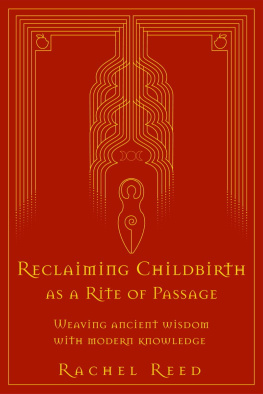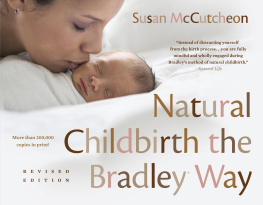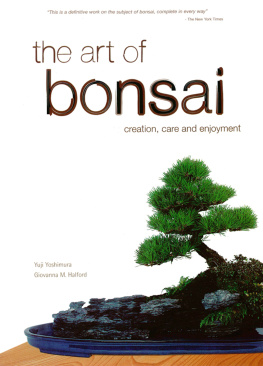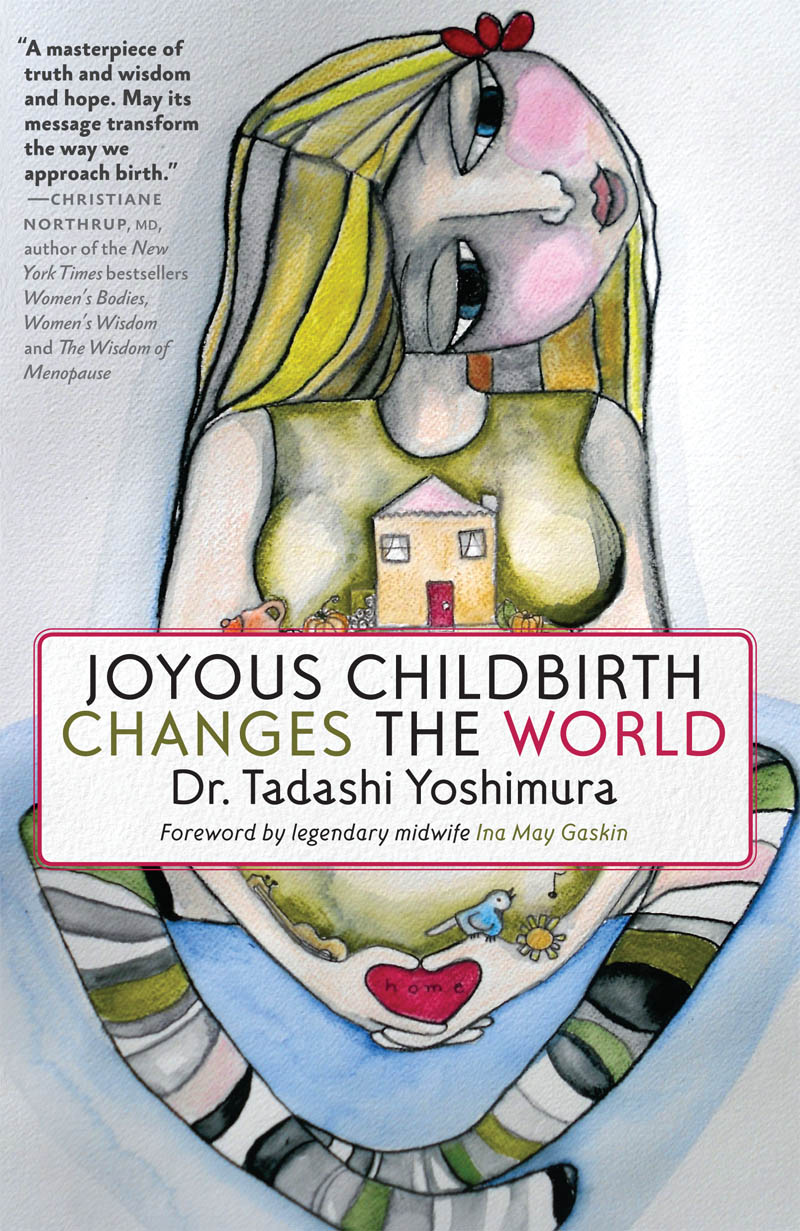JOYOUS CHILDBIRTH
CHANGES THE WORLD
JOYOUS CHILDBIRTH CHANGES THE WORLD
Dr. Tadashi Yoshimura
Foreword by Ina May Gaskin
Translated by Kaori Izumi, Brett Iimura, and Mayuko Kamata
Seven Stories Press
New York
Copyright 2008 by Tadashi Yoshimura
English translation copyright 2014 by Kaori Izumi, Brett Iimura, and Mayuko Kamata
Foreword 2014 by Ina May Gaskin
First English language edition
Original title: Shiawasena Osan Ga Nihon Wo Kaeru
Original Publisher: Kodansha Ltd.
All rights reserved. No part of this book may be reproduced, stored in a retrieval system, or transmitted in any form or by any means, including mechanical, electronic, photocopying, recording, or otherwise, without the prior written permission of the publisher.
Seven Stories Press
140 Watts Street
New York, NY 10013
www.sevenstories.com
College professors and high school and middle school teachers may order free examination copies of Seven Stories Press titles. To order, visit www.sevenstories.com/textbook or send a fax on school letterhead to (212) 226-1411.
Book design by Jon Gilbert
Library of Congress Cataloging-in-Publication Data
Yoshimura, Tadashi, 1932- author.
[Shiawase na osan ga Nihon o kaeru. English]
Joyous childbirth changes the world / Tadashi Yoshimura ; foreword by Ina May Gaskin ; translated by Brett Iimura, Kaori Izumi, and Mayuko Kamata. -- First English language edition.
pages cm
ISBN 978-1-60980-524-1 (pbk.)
1. Childbirth. 2. Childbirth--Cross-cultural studies. 3. Childbirth--Psychological aspects. 4. Mother and child--Psychological aspects. I. Title.
RG652.Y6713 2014
618.4--dc23
2013039269
Printed in the United States
9 8 7 6 5 4 3 2 1
Contents
Foreword
by Ina May Gaskin
A true scientist is one who, on observing behavior and phenomena that do not conform to the received wisdom of his profession, is open-minded and brave enough to adapt his thought and practice to the deeper reality that he has perceived. Pioneers of this kind may experience great joy and satisfaction at their discovery, believing that their clarity of understanding will be obvious to everyone else. But those who have tried differing with established medical theory and practice often learn that simple concepts that create joy and save lives can be very hard for their peers to accept. This can be a lonely road. The lives and careers of Ignaz Philip Semmelweis, Joseph Lister, and Grantly Dick-Readgreat scientists allillustrate what can happen to the person who goes in the direction that science and common sense beckon, even when that means disagreeing with medical orthodoxy. Each received a significant dose of ridicule from professional colleagues, and in the case of Semmelweis, from those who had positions higher in the medical hierarchy than he enjoyed. Lister was the only one who lived to see significant change come about during his lifetime as a result of his work.
Tadashi Yoshimura is such a pioneer in the field of modern obstetrics. He knows that both midwives and obstetricians must be part of the maternity care team and they must be highly skilled. At the same time, he recognizes that when womens lifestyles are as healthy as were their great-grandmothers regarding their nutrition and levels of every day activity, most women will be able to go through their pregnancies and births in such a way that the obstetricians services will be unnecessary, because the midwifes direct care will be sufficient for these healthy women who thus carry no great fear about the process of labor and birth. What this means in a practical sense is that the obstetrician should be the part of the maternity care team who is always there to go into action when needed but also be willing to stand aside when he or she is not needed. This requires a great deal of dedication and restraint on the part of the obstetrician, and a great respect for nature and for womens capacities to give birth.
This difficult balance is one that Yoshimuras clinic has achieved over several decades of serving Japanese families. It requires a staff of midwives and obstetricians who have very high esteem and respect for each other and for nature. It is rare that a practicing obstetrician will reject the model of care that he or she has been taught to provide in favor of incorporating a model that accepts the necessity of a strong midwifery component. The long history of tension between the professions of obstetrics and midwifery makes this a difficult and isolating career choice for an obstetrician.
I have been privileged to visit Yoshimuras clinic on two occasions, and each time I was struck by the powerful example of the work being done there and the lesson it offers maternity care systems in crisis in various parts of the world, where too many cultures have become superstitious in their worship of high technology methods applied to pregnancy and birth.
One visit was on the occasion of an obstetricians meeting at the Yoshimura clinic. About fifteen obstetricians from various parts of Japan were in attendance, along with one US obstetrician whose own wife is a midwife who assists home births. During that three-day meeting, it became evident that Yoshimuras message is beginning to reach some of his younger colleagues, who are each noticing what happens to obstetrics and midwifery as cultural levels of fear of birth rise.
Dr. Yoshimuras courage and vision in fashioning a clinic to meet the needs of women during pregnancy and birth have been remarkable, to say the least. I am certain that he has not been the only obstetrician to see fear on a laboring womans face, but what was different about him is that one such incident motivated him to question a model of birth care that replaced the encouragement provided by nurturing midwives with machines that anchored women into painful positions. That same incident caused him to begin moving away from the medical model of maternity care that he had been taught and towards a more traditional model in which the woman herself played a leading role, not a passive one, in the primal drama of giving birth. The way he replaced that model with one that cast the laboring mother in the central role of the birth drama involved closely working with midwives while he disciplined himself to be an unobtrusive presence in the corner, allowing the mother to labor without making her nervous with his presence. When he did pick up a piece of equipment, it was more often a camera to capture those moments just following the birth than a pair of forceps or a scalpel.
When I learned how closely the statistics of the midwives working with Yoshimura match those from the Farm Midwifery Center where I work with my partner midwives, I knew that at the core, Yoshimura and I had to be proceeding from the same philosophy. We are in awe of natures design. We recognize that undisturbed birth affords us humans the chance to witness the last natural process available to us and that if we are able to prepare all of the necessary participants in the process correctly, it is only rarely that technological help will prove necessary.
How interesting that an English major and an obstetrician trained in the latest technological methods could arrive at the same conclusion, coming at it via different routes. I was lucky enough to witness the most beautiful and perfect physiological birth possible as my first opportunity to witness labor or birth, and that event showed me that the biological design of women is in no way inferior to that of the rhinoceros, the elephant, the shrew, or the squirrel.
So here, at last, is the story of how Tadashi Yoshimura reached a philosophy of birth that is in harmony with nature but accepts that modern technology, too, has an important place in optimal maternity care. I have heard him say that obstetricians need to be willing to lay down their lives for the sake of the women. That may sound foolishly idealistic to some, but in an era when so many obstetricians in a growing number of countries of the world are allowing their own fears of being sued to influence their decisions to carry out unnecessary procedures on women that may sometimes be harmful, I think its time that we remember that the beneficiaries of maternity care should be women and their babies, not the institutions that organize and benefit in some way from maternity care.






